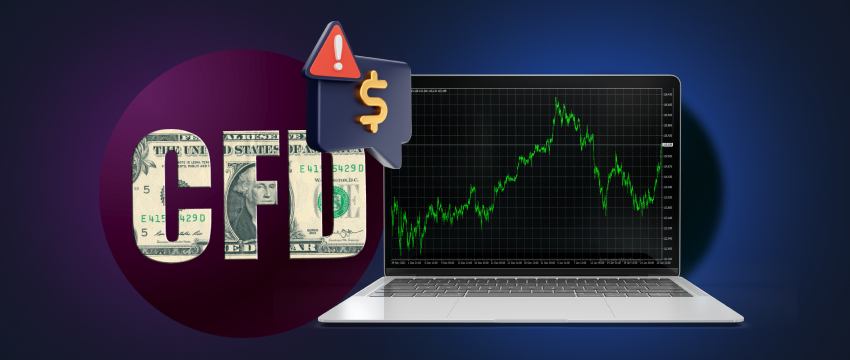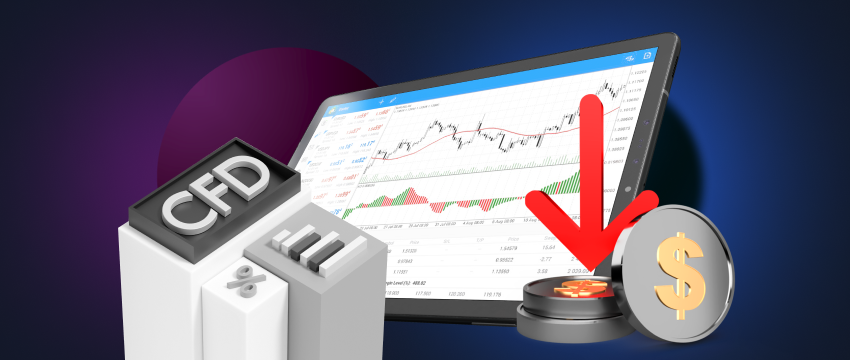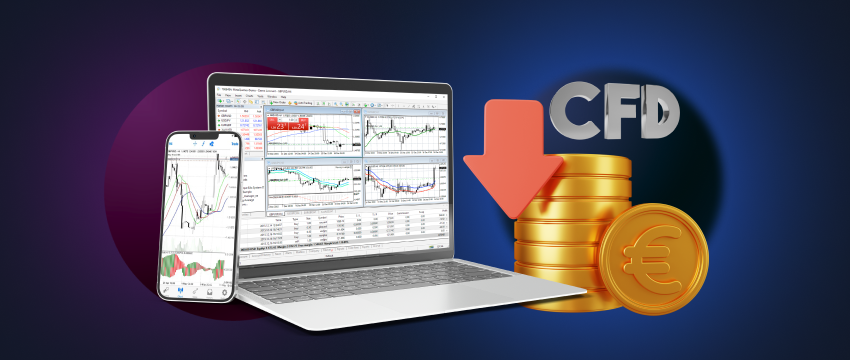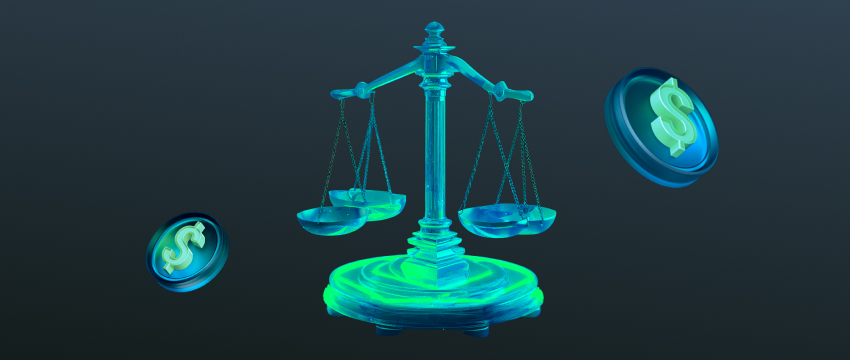CFD trading is notoriously risky, leading to a high proportion of CFD traders losing their money. There are several reasons for this, ranging from use of leverage, overtrading, lack of knowledge, trading psychology, and more. This is in addition to factors like discipline, risk management, and skill. Before we dive into these points in more detail, let’s first take a closer look at what Contracts of Difference (CFDs) are.
Contracts for Difference (CFDs)
In the context of trading, a Contract for Difference (CFD) is an agreement entered into between a CFD broker and a trader. Each CFD has an underlying asset, be this stocks, indices, commodities, metals, currency pairs, etc. The CFD enables the trader to speculate on the particular asset’s price movements. If successful, and the price moves favourably, the trader will likely make a profit. If not, the trader may incur a loss. A CFD trader will usually enter and exit multiple positions frequently throughout the trading day, in an attempt to generate incremental gains.
A CFD trader has the potential to make a profit from rising and falling markets, going long or short where applicable. But, taking into account the challenges associated with CFD trading, mitigating the risks and achieving long-term profitability is key.

How do CFD traders begin?
There are many strategies a CFD trader can adopt in order to trade CFDs.
1. CFD Day Traders
For those adopting a day tradingstrategy, they’ll typically rely on technical analysis to identify short-term price patterns and trends. They will enter and exit multiple positions with the intention of closing the trade by the end of the trading day. They do this to try and profit from small but frequent price fluctuations.
2. News trading in CFDs
News trading with CFDs is also a short-term strategy whereby traders will monitor economic announcements and news events to make trading decisions. Price reaction to a news event can occur rapidly and unexpectedly, so trading the news requires quick thinking and decision making to be successful.
3. CFD Traders Swing
The use of a swing trading strategy sees CFD traders opening positions for several days or weeks. This involves the trader typically identifying potential price movements, and determining the best timing for trade execution. This medium term approach to trading is quite popular in that it does not require the trader to constantly monitor their computer. However, it does offer relative excitement and the ability to make a profit within a reasonable time frame.
4. Position trading
A CFD trader adopting a position trading strategy will typically take a longer-term approach. They may hold onto trades for months or even years and as such rely on fundamental analysis indicators to making a trading decision. A position trader may however incur additional costs for holding CFD positions overnight, an important factor to consider when deciding what strategy to use.
The choice of trading strategy is ultimately dependent on personal preference, budget and the availability of time to track trades. Each strategy has the potential for making gains, but at the same time, the risk for loss is high. But why? Let’s explore the most common reasons that CFD traders lose money.
CFD traders & Leverage:
- CFD trading typically involves high leverage. This means traders can enter into and handle larger trades with a limited amount of capital. However, while leverage can magnify profits, it can also aggressively increase loss, quickly and unexpected.
- Traders who make use of leverage without properly understanding it or using it irresponsibly are at high risk of wiping out their capital.
Marktvolatiliteit:
- Financial markets can be incredibly volatile and without proper risk management measures in place, CFD traders can very quickly lose their money.
- Price fluctuations can occur quickly and unexpectedly. This requires traders to be highly focused and quick thinking to be successfully reactive.
Market diversity:
- Every market comes with its own complexities and factors impacting price movements. In other words, what influences the movement of commodity prices may not be as impactful on metal prices.
- CFD traders must have a proper understanding of these markets to make informed decisions.
Risk management tools:
- It’s a well-known fact that to better protect your money while CFD trading requires effective risk management. The most popular risk management tools are probably stop-loss and take-profit orders.
- Position sizing is another. Remember, traders who fail to adopt risk management strategies are more likely to experience larger losses.
CFD Traders and Overtrading:
- The temptation to trade excessively can lead to poor trading outcomes, and the loss of potential profits. Overtrading may come about either out of boredom, FOMO (fear of missing out), anxiety or stress.
- Regardless of why, having a good handle over one’s emotions and overall psychology is key to mitigating the desire to overtrade.
Emotive trading:
- CFD trading can be incredibly stressful, evoking a range of conflicting emotions that may cloud judgement, resulting in irrational financial decisions. This includes feelings of fear, overconfidence, greed, and others.
- Successful trading requires discipline and vigilantly sticking to one’s trading plan, even when emotions are running high.
Lack of ongoing education:
- Engaging in continuous learning is crucial for keeping one’s skills honed. It’s also vital for staying ahead of any new trends, developments and technological advancements.
- The world of trading is constantly evolving and if a CFD trader doesn’t stay informed, they’ll likely fall behind. Inevitably, this will result in decision making rooted in a lack of pertinent knowledge and information.
How can loss be mitigated?

So, how does a trader minimise loss? What techniques can a trader employ to make better trading decisions and to avoid losing all of their money?
Step 1:
- Having proper awareness of how leverage should be utilised is probably one of the most important steps. Overleveraging is incredibly dangerous, especially if you lack skill or experience. Err on the side of caution rather than make the mistake of using too much leverage. Be mindful of your budget and how much you can actually afford to lose.
- Don’t forget that leverage can amplify losses exponentially, don’t succumb to the temptation of making use of funds that in principle are not yours to lose. Further, ensure you adopt proper risk management techniques to protect your money, particularly on those occasions when prices move in a negative direction, threatening your capital.
Step 2:
- Acquire a proper trading related education. Before diving into CFD trading, make sure you fully understand any prospective challenges. Consume blogs, videos, webinars, podcasts, seminars, e-books, guides – whatever resource works best for your learning style to gain a good understanding of CFD trading fundamentals.
Step 3:
Build an effective CFD trading plan and stick to it. Successful trading is all about discipline and focus. This requires having a proper plan in place to drive your trading decisions. The plan should align with your goals, budget, and trading style, and must also integrate your risk management measures. Remember, failing to plan is planning to fail, particularly so in trading.
Step 4:
- Make use of a demo trading account so that you can practice, practice, practice. It’s for good reason that the phrase “practice makes perfect” is so relevant. Whilst perfection can never be attained in trading, practice will definitely boost your skills and help you gain a better foundation for making optimal decisions.
- A demo trading account is particularly useful as it mimics real-life trading conditions, and allows you to test the easiest to the most complex trading strategies using virtual funds. By not having to worry about losing your own money, you can execute as many trades as you desire, identify strengths and weaknesses, and make changes to your strategy, as and when required.

Step 5:
- Get a good hold over your trading psychology. As we’ve already discussed herein, emotions have the ability to annihilate rational decision making if not managed properly. Recognise the feelings that trading triggers. Additionally, identify the triggers that evoke those feelings. Understanding why you feel the way you do is ¾ of the battle. The other quarter is learning how to manage your emotions in a way that allows you to maintain objectivity and rationality.
Consider becoming a T4Trade trader and learn how to bolster your skills via the T4Trade Academy. Enjoy flexible trading conditions, competitive spreads and 24/5 support for a stellar multilingual customer support team.
Disclaimer: This material is for general informational and educational purposes only and should not be considered investment advice or an investment recommendation. T4Trade is not responsible for any data provided by third parties referenced or hyperlinked in this communication.




